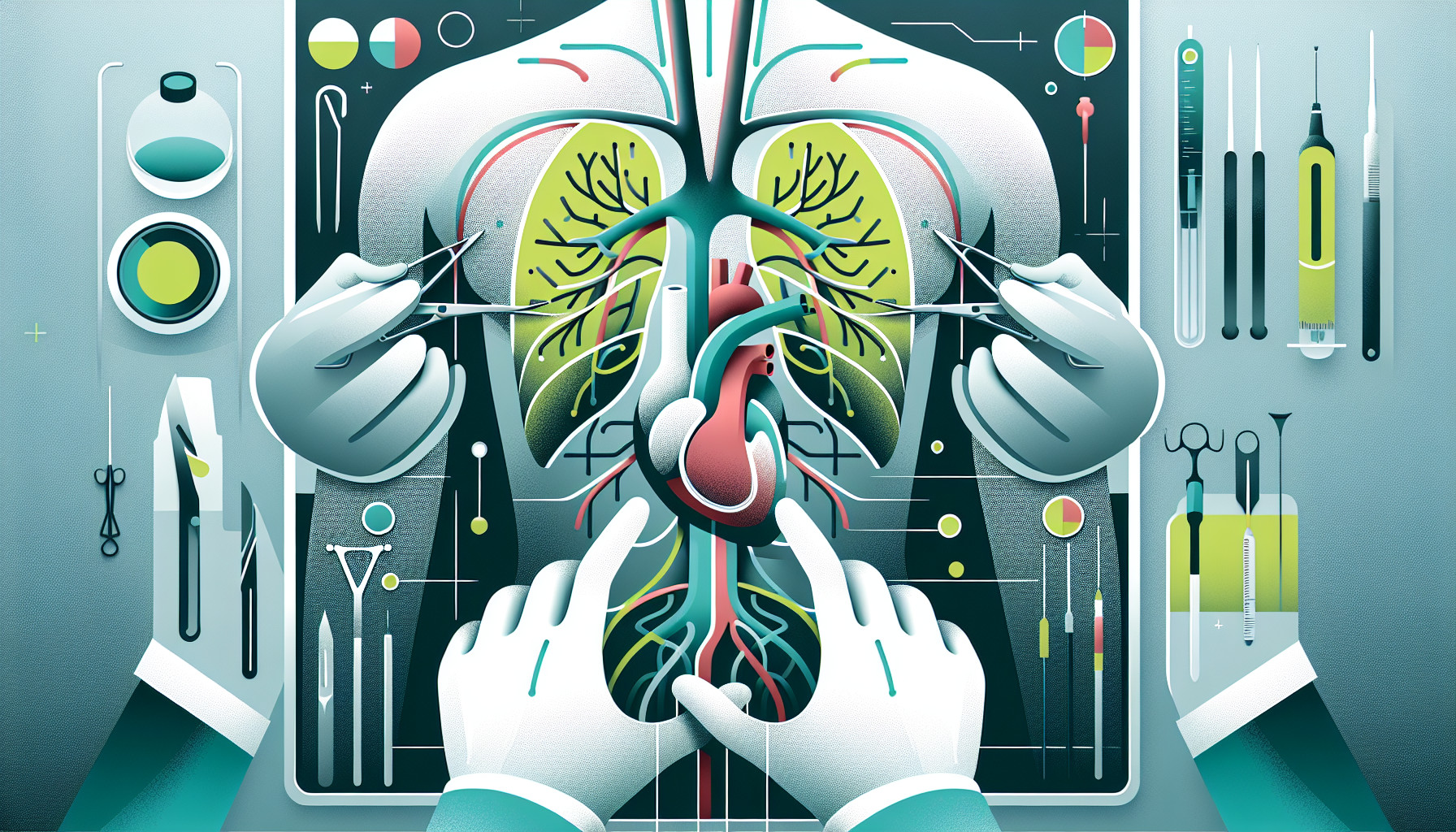Our Summary
This paper discusses the history and development of treatments for aneurysms, particularly those located in the thoracoabdominal aorta - a major blood vessel in the body. In the early 1950s, there were several different methods used to treat aneurysms, but these weren’t effective for larger, more complex aneurysms.
The first attempts to replace the affected part of the aorta used donor tissue, but this method had complications and was not ideal. The perfect replacement would be something that was safe, didn’t cause allergic reactions, was strong, flexible, and available in different sizes and shapes.
Eventually, researchers found that a synthetic material called Dacron was the best choice for replacing the damaged part of the aorta. This discovery greatly improved the treatment of these aneurysms for a period of time. Later on, a new technique was developed which made the surgery quicker and had better results for patients.
The paper also discusses additional methods that were added to the surgery to protect the patient, such as bypassing the left heart, draining cerebrospinal fluid, and cooling the kidneys.
The authors emphasize that the progress in treating these types of aneurysms is due to the work of many people over time, and the field continues to evolve.
FAQs
- What were some of the initial methods used to treat thoracoabdominal aortic aneurysms?
- What synthetic material was found to be the best choice for replacing the damaged part of the aorta, and how did it improve the treatment?
- What additional methods were added to the surgery to protect the patient during aortic aneurysm repair?
Doctor’s Tip
A helpful tip a doctor might tell a patient about aortic aneurysm repair is to follow post-operative care instructions carefully, including taking prescribed medications, attending follow-up appointments, and avoiding heavy lifting or strenuous activities as advised. It is important to monitor for any signs of infection or complications and to seek medical attention if any concerning symptoms arise. Maintaining a healthy lifestyle, including regular exercise and a balanced diet, can also help support the healing process and overall cardiovascular health.
Suitable For
Patients who are typically recommended for aortic aneurysm repair are those with large or rapidly growing aneurysms, those experiencing symptoms such as chest or back pain, shortness of breath, or difficulty swallowing, and those at risk for rupture of the aneurysm. Additionally, patients with certain risk factors such as advanced age, high blood pressure, smoking, or a family history of aneurysms may also be recommended for repair. It is important for patients to discuss their specific situation with their healthcare provider to determine the best course of treatment.
Timeline
Before aortic aneurysm repair:
- Patient may experience symptoms such as chest or back pain, shortness of breath, and difficulty swallowing.
- Patient undergoes diagnostic tests such as imaging studies (CT scan, MRI, ultrasound) to confirm the presence of an aneurysm.
- Patient is monitored closely by a healthcare team to assess the size and growth rate of the aneurysm.
After aortic aneurysm repair:
- Patient undergoes surgery to repair the aneurysm, which may involve replacing the damaged portion of the aorta with a synthetic graft.
- Patient is monitored in the intensive care unit post-surgery to ensure proper healing and recovery.
- Patient undergoes rehabilitation to regain strength and function.
- Patient continues to follow up with their healthcare team for regular check-ups and monitoring of the repaired aorta.
- Patient may need to make lifestyle changes such as quitting smoking, managing blood pressure, and maintaining a healthy diet to prevent future aneurysms.
What to Ask Your Doctor
Some questions a patient should ask their doctor about aortic aneurysm repair include:
- What are the different treatment options available for my aortic aneurysm?
- What are the risks and benefits of each treatment option?
- How will the surgery be performed and what is the expected recovery time?
- What are the potential complications of aortic aneurysm repair surgery?
- How experienced is the surgical team in performing this type of surgery?
- What follow-up care will be needed after the surgery?
- Are there any lifestyle changes I need to make after the surgery to prevent future complications?
- What symptoms should I watch out for that may indicate a problem with the repaired aortic aneurysm?
- How often will I need to have follow-up appointments to monitor the repaired aortic aneurysm?
- Are there any restrictions on activities or medications that I should be aware of after the surgery?
Reference
Authors: Green SY, Safi HJ, Coselli JS. Journal: J Cardiovasc Surg (Torino). 2021 Jun;62(3):191-202. doi: 10.23736/S0021-9509.21.11776-8. Epub 2021 Jan 26. PMID: 33496425
